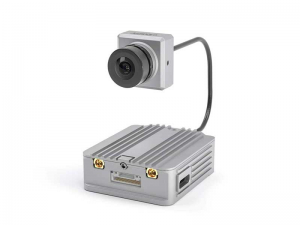
While I don’t particularly enjoy Don Joyce (I’ve run into him on Facebook groups before and didn’t find him all that pleasant off camera), his content is sometimes informative and his latest YouTube video shines a light on what is really important to Transport Canada…. Money and propagating requirements that ensure a stream of it.
My interest here is multifaceted, I enjoy flying drones recreationally and increasingly in a commercial manner for aerial photography and site surveys. My sphere of operations is small, my drones often don’t go more than a few hundred meters away at most, staying well under the ~120m AGL limits. I carry only small cameras such as GoPros or RunCams. I hold an Advanced Operations certificate from TC.
This particular absurdity begins in April 2020, with a Notice of Proposed Amendment, Remotely Piloted Aircraft Systems, Lower-Risk Beyond Visual Line-of Sight published by Transport Canada.
I’ll comment where it’s needed, so let’s jump right into the amendment and recap some of what I thought was most important.
… That being said, the majority of stakeholders have reported that the regulations, or lack thereof, are a barrier to economic growth and as industry and technology continues to grow so does the demand for more complex flights and operations
https://wwwapps.tc.gc.ca/Saf-Sec-Sur/2/NPA-APM/doc.aspx?id=11960
beyond visual line-of-sight (BVLOS).
I doubt anyone has complained to TC about a lack of regulation about BVLOS, it’s pretty clearly prohibited sans SFOC nor do people complain to governments about a lack of rules.
Here are the bullet points of their Lower-Risk BVLOS amendments:
250 g to 25 kg BVLOS operations in Isolated Areas; within 1km of an area with a population of more than 25 people per square kilometer; over an area with a population density of more than 25 people per square kilometer; and, controlled airspace;
25 kg to 150 kg BVLOS operations in Isolated Areas, and within 1km of an area with a population of more than 25 people per square kilometer; and,
150 kg to 650 kg BVLOS operations in Isolated Areas with a maximum altitude of 400 feet AGL.
No. No. No.
Population density isn’t a good way to establish these limits. These are averages, square kilometers are pretty big and the way lines are drawn will yield way too much interpretation. Situations could have apartment buildings edging large parks that would be completely suitable for BVLOS, but due to higher population density due to residential types, prohibited. Circle back to Transport Canada not trusting the RPAS pilots they test and license. By the same logic, airports should be out in the middle of nowhere.
You’ll need to get more creative than that. Here’s the TC mindset on this; some big RPAS is moving packages from Amazon on Boundary Road to a distribution point in the heart of say Gatineau. We don’t want it falling out of the sky and crashing into anyone or damaging property, so we won’t allow BVLOS.
Here’s the reality check, this is impossible VLOS, yet if you escorted the drone from a vehicle keeping it in sight the whole time, you could complete the drive/flight eventually. If it falls out of the sky as VLOS or BVLOS, it still falls out of the sky.
The flight would vary population densities to get to destination; even if airspace wasn’t an issue, you couldn’t fly over the river to make the trip as you’d violate the population densities, in fact, the whole premise of that Carlsbad to Gatineau flight would likely never get off the ground (pun intended). Yet TC has a vision for greater things? I might have been born in the morning, but it wasn’t yesterday morning. You can’t have it both ways, been seen as an innovator while stifling innovation at the same time.
While my interest is in the 250g to 25kg band, this amendment is still not good enough (PropStrike demands VLOS be dropped as a requirement, full stop.), but it gets even more crazy.
Based on industry and experience to date, BVLOS operations will likely be largely commercial; however, it is
recognized that there may be some recreational pilots who wish to fly smaller RPAS beyond visual line of sight as
well. The existing Part IX regulations for operations within visual-line-of-sight did not make a distinction between
recreational and commercial operations and TC is proposing to continue with that same approach. As a result,
TC is looking to introduce a ‘localized’ BLVOS category, whereby pilots with an RPAS less than 25 kg, remaining
below a certain altitude can perform operations such as using the “follow-me” function, flying around a building
or obstacle, or beyond the tree line without a visual observer being subject to the general BVLOS requirements
being proposed in this regulatory package.
Let them fly already!!
I’m willing to bet that there are more unsanctioned/illegal BVLOS flights going on recreationally than there are legal commercial ones in this country. TC, it’s basically ALREADY localized, we don’t have that much RF power or battery power to take us very far anyways under ideal conditions (yes there is equipment allowing for long range, but it’s infrequently seen in the immediate consumer market). Clearly Transport Canada isn’t getting it. BVLOS is the game changer for drones of all sizes. The antiquated notion of mandatory VLOS goes against the “innovative options” TC has as a part of their mission and as a bonus, we really hate VLOS here at PropStrike.
The “Follow-Me” function?! This is what TC has heard from some recreational pilots is that they want BVLOS in order to use a DJI Follow-Me function? This makes no sense.
This paragraph illustrates that TC doesn’t understand the concerns of the recreational flier and only follows the money, and where it comes from; the heavy commercial flier that needs to file expensive SFOC requests.
As part of this, TC is proposing to introduce an RPAS Operator Certificate (ROC), similar to traditional aviation’s
https://wwwapps.tc.gc.ca/Saf-Sec-Sur/2/NPA-APM/doc.aspx?id=11960
Air Operator Certificate but appropriately scaled for lower-risk RPAS BVLOS operations.
To…. (get this…)
Before receiving an ROC, the operational requirements would need to be validated by an Organizational
Proficiency Check (OPC) made by a third party. The OPC by the third party will need to be performed by an
individual who meets certain criteria and training, such as holding an Advanced Pilot Certificate with a Flight
Reviewer rating, and has received training on performing an OPC, as well as the SORA. The person who conducts
the OPC would also need to be affiliated with a self-declared Training Provider, and TC would make this
information readily available on its website.
Only the serpent of bureaucracy could feed itself it’s own tail like this. All this stuff is for heavy commercial operators that are going places and transporting things. Unrelatable, but the threat of having more testing and certifications of things outside my sphere of operations is unsettling.
I suppose the only debatable “gold” in this proposal is the following, (PropStrike supports this, but it doesn’t go far enough)
Expansion of the Existing Part IX Advanced Pilot Certificate to include ‘Localized’ BVLOS
As part of this regulatory package, TC is proposing to extend the operational procedures for pilots with valid
Advanced Pilot Certificates using a RPAS that weighs between 250 grams and 25 kg such that they may operate
beyond visual line of sight if they remain under a certain altitude (e.g. 400 feet AGL in most cases) or remain
within 100 feet (30 m) or less above and 200 feet (61 m) or less horizontally from any building or structure, and
are capable of monitoring the airspace to avoid other aircraft and not be at risk of a collision within certain
boundaries. Once they have met additional regulatory requirements, this will permit operations, such as flying
around a building for inspections or surveying a field or crop and going beyond the tree line. Please note that all
other applicable VLOS and BVLOS rules will apply, such as access to controlled airspace and the RPAS system
must have been declared to meet the new requirements for BVLOS operations in the existing Standard 922.
Have a read of the whole proposal, it’s waaay out there from the sub 25kg perspective. Really, if I have to re-read everything to get the gist of the changes, it’s too complicated.
Anyways, so they listened and generated this terrible “report“.
At some point on this anonymous (PDF metadata shows a DELIMAR as author, likely Roberto Tiradentes De Lima, on October 6th 2021), undated report, TC completed a consultation with various stakeholders that didn’t include recreational operators. It talks about drones and how TC wants to pave the way with regulatory development to enable more complex operations. Once all the foreplay is completed, the report begins with what I suppose was the leading issue.
The Fee Proposal
TC has created their own workloads by demanding SFOC for all sorts of things, not trusting the people they’ve licensed, hasn’t properly understood the costs of demanding such things and needs money to pay for the mess they’ve created. This is all again in large part to them not understanding how the vast majority of drones are used. The cost of the SFOC should relate to the amount of work that TC has to do, the better prepared the application, the more boxes can be checked, quickly, the less it should cost. If TC has to hold hands to get the job done, then it should cost more.
Small drone = small distance, little to no payload, goes walking distance.
Big drone = bigger distance, bigger payload, can go places.
The vast majority of drones are small drones. I would wild guess 10000:1 is ratio of sub 1kg to over 1kg drones. Yet the regulations are tailored toward commercial operations of heavy drones 25kg+ further reinforcing TC love of money by shoveling SFOC fees into the mix.
Yes, you’re going to piss people off by charging them more to register their drones. Rows in a database are cheap, and the fact TC even charges for this is a joke; they don’t even give you a sticker! I’d also be surprised if the vast majority of greater than 250g drones were registered in the first place. It’s just not really respected in the recreational circles as many pilots cannot relate to TC, they don’t care, and are not afraid of the consequences. Yes, the occasional publication of drone pilots charged with various offenses may serve as a deterrent to some, but the scope of proper enforcement of what you’ve concocted isn’t going to be properly interpreted by from line officers, let alone in a way that favors prosecutions. Like the YRP Police drone that collided with a Cessna; like anyone will be charged in that case.

The report jumps into an Overview of the Comments, that is really more of the authors vague “impression” of comments tone. There are no facts, no quotes, no actual comments. The general feedback was mixed. What? Do they all have brain slugs? We’re grown-ups here, please take the time and sort comments and feedback by theme or category, a frequency analysis, cut by responding group, smiley-faces vs frowny-faces?
This was suggested to highlight the distinction between those who would fly smaller drones (generally recreational pilots) and those who would fly larger drones (commercial operators and larger companies).
Unfortunately, this should not be limited to the drone registration fee. An early piece at the library of Parliament by Nicole Sweeney did a more thoughtful job of understanding the drone issue in 2017. It better understood the proposed regulation at the time and allocated weight classes more carefully while surrounding the problem of keeping drones and manned aircraft separate. In the very style of typical government overreach and likely expensive lunches with their FAA counterparts have led to the bureaucratization of what could otherwise be pretty simple.
After the previous sentence was composed, it led me to look it up; why are the rules between nations so similar? Well it turns out there is a sort of club for this…. http://jarus-rpas.org/ vice-chaired by none other than Jeannie Stewart-Smith. A bit of time on that site, and you’ll see how the mold is formed for each member country and even sample bills/laws are provided for ease of implementation.
This TC report on the proposal, and the proposal itself are both utter non-sense. The proposal itself reads like a US law bill, too many things tacked on and doesn’t seem to make any practical safety recommendations, it proposing additional bloat to the bureaucracy and a means for others to pay for it.. Make your amendments one at a time addressing something specific instead of this butter knife like spread.
Do a better job distinguishing your users and their aircraft. Transport, at it’s fundamental level is to take or carry goods from one place to another. I would argue that if your drone application falls under the umbrella of transport, as defined, then Transport Canada has a place and there is no need to re-invent the wheel, you’ve got everything you already need.
What’s new is the small drones, under 25kg, that go nowhere and carry neither cargo nor people. This is where you’ve messed up.
A drone that flies around, does flips/tricks, or carries a camera is not transporting anything anywhere.
While the TC mandate is: “We work to make our transportation system safe, secure, efficient and environmentally responsible. Canadians want green, innovative options that reduce air pollution and make the most of new technologies.”
Unfortunately, TC seems to be the least imaginative government department and are seemingly unable to provide any sort of real leadership on anything new; they follow along, like a member nation at the UN, adopting motions from Jarus and checking the boxes.
Where are all the reports of drones colliding with Manned Aircraft in Canada? I find only 2 reports at the TSB (badly coded for search):
and
I live in Ottawa, I’d be happy to consult.
Paul – PropStrike.NET



